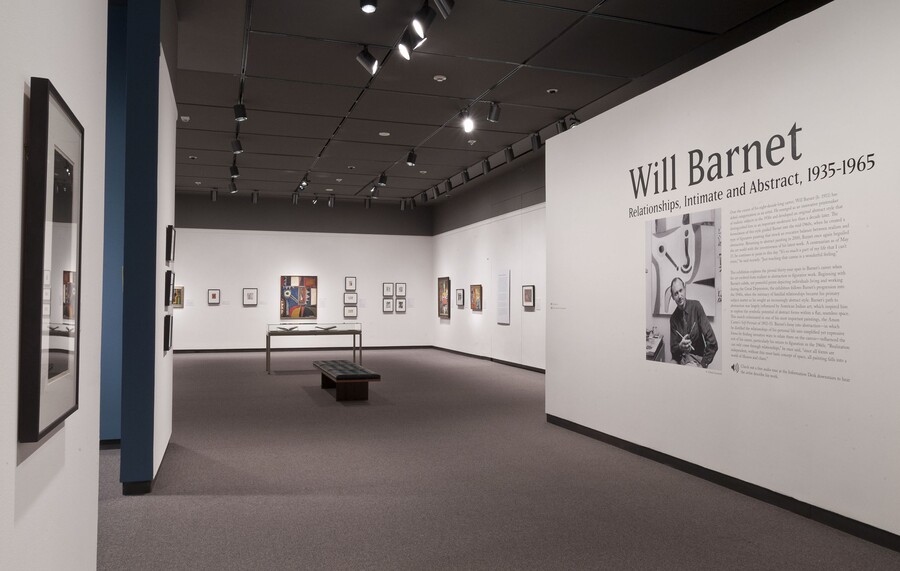April 07, 2011 Exhibition of New York centenarian artist Will Barnet on view at Amon Carter Museum of American Art beginning in June

Fort Worth, TX, April 7, 2011—To mark the 100th birthday of pioneering printmaker, painter and educator Will Barnet (b. 1911), the Amon Carter Museum of American Art presents Will Barnet: Relationships, Intimate and Abstract, 1935–1965, on view from June 18 through December 31, 2011. This exhibition of nearly 50 prints, drawings and paintings explores the momentous evolution of Barnet’s art from realism to abstraction during the middle decades of the 20th century, the most pivotal period of his career. Admission is free.
Will Barnet’s eight-decade career began in 1931, when he earned a scholarship to the prestigious Art Students League in New York. He excelled at various printmaking techniques including lithography, intaglio and woodcut, and in 1935 he was the youngest person to be appointed League Printer. A year later he began teaching at the League, where he remained an instructor of graphic arts, composition and painting for 43 years. Barnet was one of the most enduring and prominent educators of the 20th century, teaching simultaneously at the League and Cooper Union, where he taught from 1945 to 1967; he also taught at the Pennsylvania Academy of Fine Arts from 1967 to 1988. In addition, he was a visiting professor at prominent universities such as Yale and Cornell. His notable students include Robert Blackburn, Donald Judd, James Rosenquist, Mark Rothko, and Cy Twombly.
In this exhibition viewers can witness the sophisticated progression of Barnet’s art from the 1930s to the 1960s, as well as the artist’s significant contributions to mid-twentieth-century abstraction. As he initiated an inventive phase of abstraction, Barnet was inspired by modern movements such as Cubism but also looked to such diverse sources as European old masters and most importantly Native American art. He began collecting turn-of-the-century volumes from the Smithsonian’s Bureau of Ethnology, which document Native American Indian cultures. The particular volumes by the Bureau that inspired Barnet will be featured in the exhibition. A volume devoted to ancient Pueblo pottery designs, for instance, sparked Barnet’s desire to create abstract forms with latent meanings and integrate them within a seamless space. Barnet’s stylistic evolution was thus marked by his search for the symbolic potential of forms and ways to devise meaningful relationships between these forms in his images.
“Realization can only come through relationships,” Barnet has said. “Without this most basic concept, all painting falls into a world of illusion and chaos.”
With this guiding principle, Barnet created one of his most important abstract paintings, the Amon Carter’s Self-Portrait (1952–53). Alongside this masterwork are related drawings being exhibited for the first time, which reveal the intricacies of Barnet’s creative process.
Visitors to the exhibition can hear directly from the artist about many of the works in the exhibition, his background, artistic process and personal philosophy of art by checking out the accompanying iPod touch audio tour available for free loan from the museum’s Information Desk during the run of the exhibition. The audio tour will also be offered on the museum’s website for individuals to access anytime.
“Will Barnet is well-known in New York, but the Amon Carter’s audiences may not be as familiar with his work,” says Shirley Reece-Hughes, assistant curator of paintings and sculpture. “We hope this exhibition will give our visitors an awareness and appreciation for this remarkable artist, who even at nearly 100, still paints daily.”
As his 100th birthday approaches on May 25, 2011, Barnet says, “All I think about is trying to make another painting because it’s so much a part of my life that it’s like I can’t retire. I will paint because it’s in the nature of the impression, color—and just touching that canvas is a wonderful feeling.”